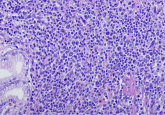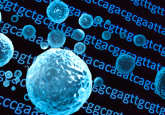Getting to the heart of coronary arterialization

Researchers have uncovered new details about the mechanism by which new arteries form in the heart, potentially informing development of novel therapeutic interventions for cardiac ischemia.
A team of researchers from the Max Delbrück Center (Berlin, Germany) have investigated cardiac pre-arterial cells, detailing an unknown part of their development, to understand the underlying mechanisms behind coronary arterialization. Previous research has identified cardiac pre-arterial cells as a type of capillary endothelial cell that upregulates mature artery markers and contributes to coronary artery assembly, but little is known about its underlying mechanisms. By illuminating the underlying mechanisms of cardiac pre-arterial cells, the development of novel therapeutic interventions for heart tissue damage could be on the horizon.
Cardiac ischemia is a condition characterized by the partial or complete blockage of the coronary arteries, which results in reduced blood flow to the heart muscle. Current therapeutic interventions are aimed at alleviating the symptoms of the condition by improving blood flow to the heart, thus reducing the risk of a heart attack. With the condition being a leading cause of morbidity and mortality, understanding the intricacies of the molecular, cellular and structural cues involved in the process of coronary arterialization is key to driving the development of regenerative strategies that promote revascularization in ischemic heart tissue.
By combining single-cell sequencing with 3D spatiotemporal mapping, the researchers were able to unravel the transcriptional states of cardiac endothelial cells taken from mice at four different stages between the embryonic and adult stage. The team demonstrated that cardiac pre-arterial cells exhibit ‘tip cell’ signatures. Tip cells are a type of specialized cell that responds to environmental cues, directing growing vessels in a specific direction. The findings suggest that cardiac pre-arterial cells are derived from sprouting tip cells, contributing to coronary artery and endocardial tunnel structures.
 The tale of the zebrafish and the regenerative heart
The tale of the zebrafish and the regenerative heart
A recent study has compared zebrafish and medaka to figure out why zebrafish can regenerate heart tissue while medaka cannot, potentially advancing human cardiac arrest treatments.
Prior to this study, it was believed that mechanical cues – the velocity of blood flowing through arteries, for example – drove arterial development of specific features, such as length and diameter. However, findings from this study provide evidence that during tip cell sprouting, pre-arterial cells are primed to develop into arterial cells prior to exposure to these mechanical cues.
“Now we know that it is not only flow that signals vascular endothelial cells to become arteries, but that tip cells transition into pre-arterial cells to eventually become arteries,” stated Holger Gerhardt, co-author of the study. “Surprisingly, we find that not all tip cells have the capacity to form arteries, raising the prospect of selectively increasing this pool of cells for therapeutic purposes.”
The team also set out to investigate the conservation of pre-arterial cells across different species. Analysis of previously published transcriptomic data from human embryonic heart tissue revealed a similar transcriptional signature to that observed in the murine pre-arterial cell population, suggesting that this may be a conserved mechanism during development. Not only did they observe this mechanism during development, but they also observed an increase in the pre-arterial cell population in response to ischemic injury, suggesting that the process of tip cell-to-artery specification can be reactivated following a heart attack.
Lead author of the study Elena Cano commented, “This is a step forward. It is a new mechanism that we can potentially tweak during regeneration to see whether we can form new arteries for optimal restoration of blood supply.” By providing new evidence of the role that cardiac pre-arterial cells play in the development of new arteries, the findings of this study could drive development of novel regenerative therapies aimed at reversing heart muscle damage.





